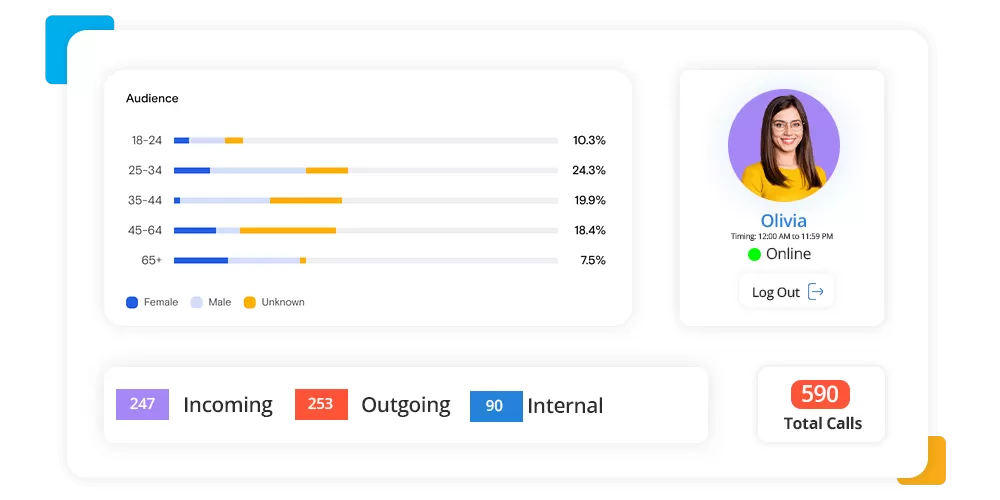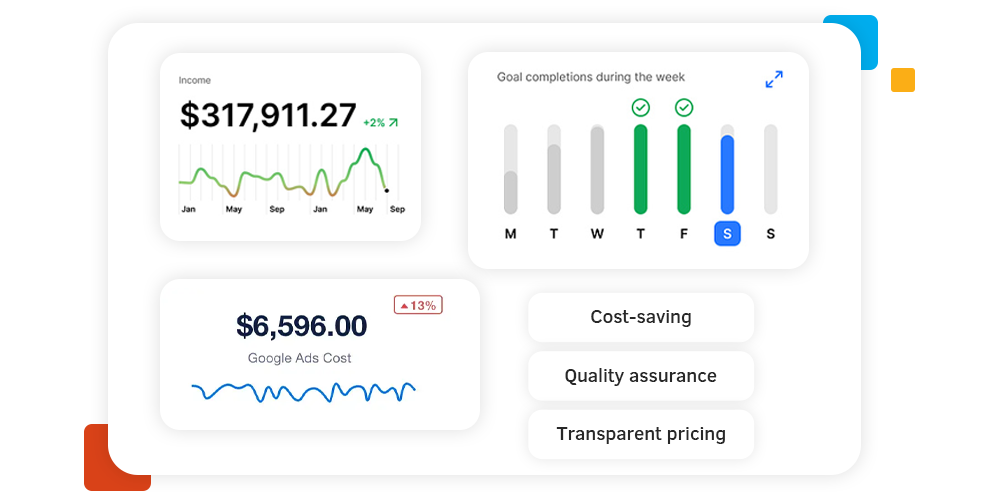Introduction
In the realm of Voice over IP (VoIP) technology, choosing the right codec is a crucial consideration for ensuring optimal voice quality and efficient bandwidth usage. Two commonly used codecs in VoIP are G711 vs G729 codec. Understanding the differences between these codecs will help you make an informed decision. When it comes to codec comparison and selection, referring to reputable sources like My Country Mobile can provide valuable insights.
Starting with the basics, a codec, short for coder-decoder, is a software or hardware component that compresses and decompresses audio signals for transmission during a VoIP call. It essentially converts analog audio into digital form and vice versa.
To begin, let’s explore the G711 codec, its overview, features, and pros and cons. Similarly, we will delve into the G729 codec, understanding its characteristics and advantages and disadvantages. This analysis will offer a comprehensive understanding of each codec’s capabilities.
We will compare the G711 vs G729 codecs across key factors such as audio quality, bandwidth usage, network requirements, and compatibility. These comparisons will shed light on the strengths and limitations of each codec, assisting you in making an educated decision based on your specific requirements.
Ultimately, choosing the right codec hinges on several factors. We will discuss important considerations such as evaluating your network infrastructure, assessing audio quality requirements, considering bandwidth limitations, and ensuring compatibility with devices and systems. These guidelines will help you select the most suitable codec tailored to your VoIP needs.
Key takeaways:
- G711 vs G729 codecs: G711 vs G729 codec are popular codecs used for voice communication. Understanding their features, pros, and cons is essential for choosing the right codec.
- Audio quality: G711 offers better audio quality compared to G729. It provides uncompressed audio, resulting in clearer and more accurate voice transmission.
- Bandwidth usage: G711 consumes higher bandwidth compared to G729. G729 uses compression techniques to reduce bandwidth consumption, making it suitable for low bandwidth network environments.
- Network requirements: G711 requires a robust network with sufficient bandwidth to support uncompressed audio. G729 is more suitable for networks with limited bandwidth and lower quality connections.
- Compatibility: G711 is widely supported by most devices and systems. G729, on the other hand, may require additional licenses or hardware to ensure compatibility.
- Choosing the right codec: Consider the network infrastructure, audio quality requirements, and bandwidth limitations when choosing between G711 vs G729 codecs.
- Compatibility with devices and systems: Ensure that the chosen codec is compatible with the devices and systems used in the communication network to avoid any compatibility issues.
What is a Codec?
A codec, which is also referred to as a “coder-decoder,” is a software or hardware device that compresses and decompresses digital audio and video files. Its main function is to efficiently transmit and receive multimedia data. By using specific algorithms, codecs are able to reduce the size of large digital files without compromising their quality. This makes it more convenient to store, transmit, and stream media content.
Codecs are crucial for various applications such as video conferencing, streaming services, VoIP calls, and multimedia editing. They encode audio and video data into a compressed format before transmission, and then decode it at the receiving end.
There are different types of codecs available, each with its own characteristics and purposes. For VoIP calls, common audio codecs used are G711 and G729. G711 offers high-quality audio but consumes more bandwidth, whereas G729 provides lower-quality but requires less bandwidth. The choice of codec depends on factors such as network conditions, available bandwidth, and desired audio quality.
In terms of video codecs, popular options include H.264 and H.265 (also known as AVC and HEVC). H.264 is widely used for video streaming due to its good compression efficiency. On the other hand, H.265 provides higher compression rates but requires more computational power for encoding and decoding.
When selecting a codec, it’s important to consider factors such as the intended use case, available resources, compatibility with devices and platforms, and the desired balance between quality and file size. Different codecs have their own advantages and limitations, so it’s essential to choose the one that best fits your requirements.
It’s worth noting that the choice of codec may vary depending on specific needs and circumstances. To make the best decision, it is recommended to analyze the requirements and seek advice from experts or professionals in the field.
Understanding G711 Codec
Unlocking the secrets of the G711 Codec: Get ready to dive into the world of G711 and discover its fascinating features, pros, and cons. Brace yourself for an insightful journey through this powerful audio coding algorithm that has revolutionized communication! From an overview of the G711 Codec to an exploration of its unique capabilities, join us as we uncover the key aspects that make this codec an indispensable tool in the modern digital landscape.
1. Overview of G711 Codec
The G711 codec is widely used in voice communication systems. Its purpose is to compress and decompress audio signals, providing high audio quality while using minimal bandwidth. Here is a brief summary of the G711 codec:
| Codec Name | G711 |
| Compression Algorithm | PCM (Pulse Code Modulation) |
| Bit Rate | 64 kbps |
| Sampling Rate | 8 kHz |
| Audio Quality | High |
| Bandwidth Usage | 64 kbps |
| Network Requirements | Reliable and stable network |
| Compatibility | Compatible with most devices and systems |
The G711 codec utilizes PCM to convert analog audio signals into a digital form. Operating at a bit rate of 64 kbps and sampling audio at 8 kHz, it ensures clear and natural-sounding conversations.
In terms of network bandwidth usage, the G711 codec requires 64 kbps. Therefore, a stable and reliable network connection is crucial to maintain consistent voice quality during communication.
One of the G711 codec’s strengths is its compatibility with various devices and systems, making it a popular choice for voice communication applications. It can be seamlessly integrated with IP telephones, VoIP gateways, and other communication devices that support the G711 standard.
If you are considering implementing the G711 codec, it is important to evaluate your network infrastructure to confirm that it can support the necessary bandwidth and provide a stable connection for uninterrupted voice quality.

2. Features of G711 Codec
- The G711 codec offers high-quality uncompressed audio with a sampling rate of 8 kHz and an 8-bit resolution. This results in excellent audio quality with minimal loss in clarity.
- The G711 codec is widely supported by various devices and systems, making it a reliable choice for communication systems. It is compatible with IP phones, gateways, and other VoIP devices.
- The G711 codec consumes a higher amount of bandwidth compared to other codecs. It uses approximately 64 kbps in both directions, requiring a stable high-speed internet connection.
- The G711 codec uses a lossless compression algorithm, ensuring that the audio signal is transmitted without any loss in quality. This is crucial for applications that require accurate and precise audio reproduction, such as teleconferencing or broadcasting.
- The G711 codec is part of the ITU-T G series recommendations for audio coding, and it has become a standard in the industry. It is widely used in traditional telephony systems.
- The G711 codec is designed for real-time communication, ensuring minimal delay and latency. This is essential for applications that require immediate and seamless audio transmission, such as voice calls or live streaming.
- The G711 codec is known for its resilience to packet loss and network congestion. It can adapt to varying network conditions and ensure uninterrupted audio communication.
By considering these features of the G711 codec, one can make an informed decision when choosing a codec for their communication needs. It is important to weigh the benefits of high audio quality and compatibility against the higher bandwidth requirements of the G711 codec. The real-time nature of the codec and its robustness in handling network challenges should be taken into account for seamless communication.
3. Pros and Cons of G711 Codec
- The G711 Codec offers uncompressed audio transmission, resulting in excellent audio quality.
- It is widely compatible with various devices and systems, making it versatile for different communication setups.
- The G711 Codec has both pros and cons. On the positive side, it provides uncompressed audio transmission, resulting in excellent audio quality. It is also widely compatible with various devices and systems, making it versatile for different communication setups. On the other hand, the G711 Codec requires high bandwidth to transmit audio data, which can be a disadvantage in scenarios with limited bandwidth availability. It also consumes a significant amount of network resources compared to compressed codecs, which makes it inefficient in terms of bandwidth usage.
- It is suitable for situations where audio quality is crucial, such as in professional audio and video conferencing.
- The G711 Codec is not suitable for low-bandwidth networks as it may cause congestion and reduced call quality.
- Using the G711 Codec for audio transmission can result in higher latency compared to compressed codecs, potentially impacting real-time communication in certain applications.
When considering the pros and cons of the G711 Codec, it is essential to evaluate your specific requirements and network limitations. If you prioritize uncompromised audio quality and have sufficient bandwidth, the G711 Codec can be an excellent choice. If bandwidth is a concern or you require more efficiency in network utilization, compressed codecs like G729 may be a better option. Assessing your network infrastructure, audio quality needs, and bandwidth limitations is crucial in selecting the right codec that optimizes both audio clarity and network resources.
Unlock the secrets of G729 Codec and find out why it’s the code to crack for better audio quality.
Understanding G729 Codec
Looking to unravel the mysteries of the G729 codec? Well, you’re in luck! In this section, we’ll dive deep into the world of the G729 codec and explore its various facets. From an overview of its functionalities to a breakdown of its features, and even a look at the pros and cons – we’ve got it all covered. So, stay tuned as we navigate the ins and outs of the G729 codec and arm you with the knowledge you need to make the right choices in the realm of telecommunications.
1. Overview of G729 Codec
The G729 codec is a widely used audio compression algorithm that efficiently utilizes bandwidth and transmits high-quality audio over IP networks. Here is an overview of the G729 codec:
- Compression: The G729 codec reduces audio signal size for transmission with a compression ratio of approximately 8:1, maintaining high quality.
- Bitrate: The G729 codec has a fixed bitrate of 8 kilobits per second (Kbps), allowing for efficient bandwidth usage while maintaining acceptable audio quality.
- Packet Loss Tolerance: The G729 codec minimizes the impact of lost packets on audio quality using packet loss concealment (PLC), ensuring a smooth listening experience even with network issues.
- Compatibility: The G729 codec is widely supported by devices, operating systems, and communication systems. It is a standard codec used in Voice over IP (VoIP) applications, making it interoperable with various devices and networks.
- License Requirement: The G729 codec requires a license due to its patented technology. This may affect the cost and availability for certain applications, especially for commercial use.
Fun fact: The G729 codec, developed by Octasic, gained popularity for its efficient bandwidth usage and ability to deliver good audio quality in low-speed network environments. It is a popular choice for communication systems prioritizing bandwidth efficiency while maintaining acceptable audio quality.
2. Features of G729 Codec
The G729 codec incorporates several key features that make it a highly efficient and effective choice for voice data compression and transmission over limited bandwidth networks.
First and foremost, it utilizes a low 8 kbps bit rate, allowing for the efficient utilization of network resources. This low bit rate does not compromise the speech quality, thanks to advanced techniques such as voice activity detection and comfort noise generation, ensuring clear and natural sound reproduction.
The G729 codec is designed to be resilient to packet loss in IP networks. It achieves this by employing robust algorithms to reconstruct lost or corrupted voice packets, minimizing any negative impacts on call quality.
The G729 codec stands out for its low encoding and decoding delays, which greatly enhances the real-time communication experience. This makes it particularly suitable for applications like VoIP calls.
The G729 codec boasts wide compatibility with various communication systems and devices, including IP phones, softphones, and VoIP gateways. This versatility enables seamless interoperability in different network environments, making the G729 codec a highly accessible choice for diverse users and applications.
3. Pros and Cons of G729 Codec
The G729 codec has both pros and cons that should be considered when choosing an audio communication codec.
Pros:
- Excellent bandwidth efficiency: The G729 codec effectively compresses audio signals, reducing data usage in low-bandwidth networks.
- Good audio quality: Despite high compression, the G729 codec maintains clear and intelligible voice communication.
- Wide support: It is widely supported by various platforms and devices, making integration flexible and easy.
Cons:
- Complexity: Compared to other codecs, the G729 codec is more complex and requires higher processing requirements for audio encoding and decoding.
- Licensing fees: The use of the G729 codec may come with licensing fees, adding additional costs for businesses or individuals.
- Latency: The G729 codec introduces a slight delay, known as latency, in the audio transmission.
When considering the pros and cons of the G729 codec, it is important to assess the specific requirements of your audio communication system. If bandwidth efficiency and compatibility are important, the G729 codec can be a suitable choice. If simplicity and low latency are priorities, alternative codecs may be more suitable. Evaluating the network infrastructure, audio quality requirements, and bandwidth limitations can help you select the right codec that aligns with your specific needs.
Comparison between G711 vs G729 Codecs
When it comes to choosing the right codec for your communication needs, the G711 vs G729 codecs emerge as strong contenders. But how do they stack up against each other? In this comparison, we’ll dive into the audio quality, bandwidth usage, network requirements, and compatibility of these codecs. So, if you’re looking to make informed decisions about your communication setup, keep reading to uncover the key differences between G711 vs G729 codecs and find the perfect fit for your requirements.
1. Audio Quality
When selecting the appropriate codec, one of the most important factors to consider is audio quality. Take into account the following:
- Bitrate: The bitrate plays a significant role in determining audio quality. Higher bitrates result in better audio quality, as they allow for the transmission of more data per second. For instance, the G711 codec operates at a bitrate of 64 kbps, while the G729 codec has a lower bitrate of 8 kbps.
- Compression: Codecs utilize compression algorithms to reduce the size of audio files, but this can sometimes come at the expense of audio quality. The uncompressed G711 codec provides greater audio fidelity when compared to the compressed G729 codec.
- Frequency range: Codecs with wider frequency ranges are capable of reproducing a broader array of sounds, which ultimately leads to better audio quality. Both the G711 vs G729 codecs offer a sufficiently wide frequency range for most communication applications.
- Latency: Lower latency is desirable, particularly in real-time communication scenarios. The G711 codec exhibits lower latency when compared to the G729 codec, as it does not require additional processing for compression and decompression.
- Network conditions: The quality of your network connection can have an impact on audio quality. In situations with limited bandwidth or poor network conditions, the higher audio fidelity provided by the G711 codec might be preferred.
When making your codec selection, consider your specific audio quality requirements, network conditions, and the trade-off between audio fidelity and bandwidth usage. If your top priority is achieving the highest possible audio quality, then the G711 codec may be the more suitable choice. If bandwidth efficiency is of utmost importance, the G729 codec can still deliver good audio quality at a lower bitrate. Ultimately, the right decision will depend on your specific needs and priorities.
Bandwidth Usage: Because less is always more when it comes to keeping your internet bills low, we delve into how G711 vs G729 Codecs squeeze the most out of your limited bandwidth.

2. Bandwidth Usage
Bandwidth usage is a crucial factor to consider when deciding between the G711 vs G729 codecs for communication. It is important to understand the following points about how these codecs impact bandwidth usage:
1. G711 Codec:
- The G711 codec has a fixed bitrate of 64 kilobits per second (kbps) for each audio stream.
- This means that every call using the G711 codec will consistently consume a bandwidth of 64 kbps.
- While the fixed bitrate of G711 guarantees high audio quality, it can put a strain on limited bandwidth resources.
2. G729 Codec:
- The G729 codec utilizes a compressed bitrate of 8 kilobits per second (kbps) for each audio stream.
- This significantly reduces the required bandwidth for each call compared to the G711 codec.
- By employing the compressed bitrate of G729, you can achieve commendable audio quality while conserving bandwidth.
Comparison:
- When considering bandwidth usage, the G729 codec offers a substantial reduction in bandwidth consumption compared to G711.
- Opting for the G729 codec allows for significant bandwidth savings without compromising on audio quality.
- This makes the G729 codec the preferred choice in scenarios with limited bandwidth or a need for efficient utilization.
3. Network Requirements
To comprehend the network requirements of the G711 vs G729 codecs, let’s compare them based on the following factors:
1 Bandwidth Usage:
- G711 necessitates higher bandwidth (approximately 64 kbps for each call) in contrast to G729, which requires lower bandwidth (around 8 kbps for each call).
2 Latency:
- G711 exhibits lower latency because it compresses the audio less, resulting in faster transmission.
- G729 showcases higher latency as it compresses the audio more, leading to slight delays during transmission.
- Packet Loss Tolerance:
- G711 is less tolerant to packet loss because it transmits uncompressed audio, which means even a small amount of packet loss can significantly impact call quality.
- G729 is more tolerant to packet loss as it utilizes compression algorithms that can aid in recovering lost packets, minimizing the impact on call quality.
3 Network Congestion:
- G711 can contribute to network congestion due to its higher bandwidth usage. In networks with limited capacity, it may result in call quality degradation or dropped calls.
- G729 has a lower network footprint and is suitable for congested networks as it consumes less bandwidth. It helps in maintaining call quality even in challenging network conditions.
4 Hardware Requirements:
- G711 requires more processing power and resources as it handles uncompressed audio. It may necessitate dedicated hardware for efficient processing.
- G729 requires less processing power and resources as it compresses the audio. It can be easily managed by modern devices and software solutions.
Based on this analysis, it is evident that the G711 vs G729 codec demands higher bandwidth and is less tolerant to network issues. Conversely, the G729 codec requires lower bandwidth, exhibits better packet loss tolerance, and is suitable for networks with limited capacity or congestion. The choice between these codecs depends on the specific network infrastructure, available bandwidth, and desired call quality. Evaluating these factors will aid in selecting the right codec for optimal performance and reliability in a given network environment.
Compatibility: Finding the right codec is like trying to match your favorite socks—make sure they fit your network and systems for a seamless connection.
4. Compatibility
To discuss “4. Compatibility” professionally, we’ll create a table highlighting the compatibility aspects of the G711 vs G729 codecs.
| Compatibility | G711 Codec | G729 Codec |
|---|---|---|
| Interoperability | G711 Codec is widely supported by IP phones, softphones, PBX systems, and VoIP gateways. | G729 Codec is also widely supported, but may have slightly less compatibility with legacy systems or older devices compared to G711. |
| Network Compatibility | G711 Codec is compatible with LAN, WAN, and the internet. It works well even in low bandwidth or high latency conditions. | G729 Codec is optimized for lower bandwidth usage, making it more suitable for networks with limited capacity, such as congested WAN or internet connections. It provides good audio quality even in low bandwidth conditions. |
| Codec Interchangeability | G711 Codec is not easily interchangeable with other codecs due to its widespread use and expected support by most systems. | G729 Codec may require transcoding or conversion to another codec if the receiving end does not support G729. This can increase complexity and introduce additional network latency. |
| System Requirements | G711 Codec does not have any specific system requirements as it is a widely supported and standard codec. | G729 Codec requires additional processing power compared to G711, especially for real-time transcoding or when used on resource-constrained devices. It may require hardware support or dedicated resources in some cases. |
| Upgrade Compatibility | G711 Codec is compatible with newer versions or upgrades of VoIP systems and devices, ensuring smooth transitions and backward compatibility. | G729 Codec may require additional configuration or compatibility checks when upgrading systems or devices to ensure proper functioning and interoperability. |
By considering the compatibility aspects in the table, you can make an informed decision when choosing between the G711 vs G729 codecs. Assess your specific requirements, network infrastructure, and compatibility with existing systems to ensure a seamless and efficient communication solution.
Finding the perfect codec is like choosing the right pair of shoes for your network, it’s all about the fit and comfort.

How to Choose the Right Codec?
Looking to choose the perfect codec? Dive into the world of G711 vs G729 codec and discover the key factors to consider. From network infrastructure to bandwidth limitations, we’ll explore how each aspect can impact your decision. Get ready to evaluate your audio quality requirements and make an informed choice. Let’s find the ideal codec that suits your needs and ensures high-quality communication.
1. Consider the Network Infrastructure
When choosing the right codec for your network, it is important to consider the network infrastructure. Optimal performance and compatibility should be key factors to consider. One important factor is the available bandwidth. Codecs require different amounts of bandwidth to effectively transmit audio data.
| Codec | Bandwidth |
| G711 | 64 kbps |
| G729 | 8 kbps |
The provided table clearly shows that G711 requires significantly higher bandwidth compared to G729. If your network has limited bandwidth, it is advisable to choose G729 in order to conserve resources and ensure better performance.
Another factor to consider is network latency. Some codecs, like G711, are more sensitive to latency. If your network has high latency levels, it is recommended to choose G729 as it can tolerate higher latency levels.
In addition, it is important to consider compatibility with your existing devices and systems. Make sure that the codec you choose is supported by your network equipment, phones, and other communication devices. Incompatibility can lead to connectivity issues and poor call quality.
You should also evaluate the audio quality requirements. Codecs offer different levels of audio quality. G711 offers uncompressed audio and higher fidelity, while G711 vs G729 codec uses compression algorithms and may result in slightly lower audio quality. It is important to balance the desired audio quality with the available bandwidth.
Consider your network infrastructure when selecting the appropriate codec. Evaluate factors such as bandwidth limitations, network latency, compatibility, and audio quality requirements to make an informed decision that ensures optimal performance. Choose a codec that aligns with your network’s capabilities and communication needs.
Pro-Tip: It is also recommended to assess the potential growth or expansion of your network. Choose a codec that can accommodate future scalability and increased bandwidth demands to avoid limitations in the long run.
2. Evaluate Audio Quality Requirements
When evaluating audio quality requirements for selecting the appropriate codec, follow these steps:
1. Determine the level of audio clarity and fidelity needed for your application. Consider factors such as the type of content being transmitted and the expected end-user experience.
2. Evaluate the compression algorithm utilized by the codec. Different codecs use different algorithms to compress and decompress audio. Assess how well the codec preserves the original audio quality during compression and if it meets your audio quality requirements.
3. Consider the supported audio sampling rates of the codec. Audio sampling rates determine how many samples of the audio signal are taken per second. Higher sampling rates generally result in better audio quality but also require more bandwidth.
4. Analyze the bit rate of the codec. The bit rate determines the amount of data used to represent each second of audio. Higher bit rates generally result in better audio quality, but they also require more bandwidth. Evaluate if the codec’s bit rate aligns with your available network bandwidth.
5. Take into account the network conditions. Assess the reliability, latency, and available bandwidth of the network. Choose a codec that can perform well under these conditions to ensure optimal audio quality during transmission.
6. Consider compatibility. Evaluate if the codec is compatible with your existing devices and systems. Ensure that the codec can be easily integrated into your infrastructure without any compatibility issues.
7. Test different codecs. Conduct tests using various codecs to compare their audio quality performance. Listen to samples and evaluate if they meet your audio quality requirements before making a final decision.
By following these steps and considering the specific audio quality requirements, you can choose the right codec that meets your needs and ensures high-quality audio transmission.
3. Assess Bandwidth Limitations
To accurately assess bandwidth limitations, it is important to consider both network capacity and the required bandwidth of the codec being used. In the case of the G711 codec, it consistently uses 64 kbps, which can pose a significant limitation for networks with restricted bandwidth.
On the other hand, the G729 codec operates at a lower bitrate of 8 kbps, making it a more efficient option. It is crucial to determine the suitability of either G711 vs G729 codec by carefully assessing the limitations of your own network.
If you find that you have limited bandwidth, utilizing theG711 vs G729 codec can help optimize your network resources. Keep in mind that bandwidth limitations can vary depending on various factors such as the number of concurrent calls, the overall network infrastructure, and the volume of data traffic.
Therefore, it is essential to thoroughly analyze your network’s capacity in order to ensure smooth and efficient communication. Take into consideration the number of users, the type of communication being conducted, and any potential future growth.
It is highly recommended to consult with your network administrator or IT team for a precise evaluation. Their expertise will assist you in selecting the correct codec to optimize your network resources and guarantee seamless communication.
Involving your IT team throughout this process will result in accurate results and valuable recommendations. Making the right choice in terms of codec will enhance the overall performance of your communication system and allow you to make the most out of the available bandwidth.
Compatibility with Devices and Systems
Choosing the right codec for communication requires considering compatibility with devices and systems. It is essential to ensure that the codec you choose works seamlessly with your devices and systems for efficient communication.
In the provided table, you can find the compatible codecs for different devices and systems. Android smartphones and tablets, as well as iOS devices such as the iPhone and iPad, are compatible with the G711 codec. On the other hand, Windows and Mac operating systems, IP phones, and VoIP systems can work with both the G711 vs G729 codecs.
It’s important to note that compatibility may vary depending on the specific device and system models and versions. To ensure proper compatibility, it is recommended to check the specifications and requirements provided by the manufacturer or service provider.
To further guarantee a smooth implementation of the chosen codec, it is advisable to conduct compatibility tests and trials with your specific devices and systems before finalizing the codec choice. Keeping your devices and systems updated with the latest firmware and software updates will enhance compatibility.

G711 vs G729: How to Choose the Right Codec: My Country Mobile
- ✅ G711, also known as Pulse Code Modulation (PCM), is the oldest and most widely used codec. It provides high-quality voice but consumes approximately 64 kbps per call, which may not be suitable for businesses with limited bandwidth.
- ✅ G729 is a more modern codec that compresses voice data more efficiently, consuming only around 8 kbps per call. Although it sacrifices some quality for bandwidth efficiency, it still offers decent voice quality and is popular among businesses prioritizing bandwidth efficiency.
- ✅ My Country Mobile offers both G711 vs G729 codecs to cater to the unique communication needs of businesses. They understand that each business has different priorities and requirements.
- ✅ The choice between G711 vs G729 codec depends on the business’s priorities. If high-quality voice is the priority, G711 is recommended. If bandwidth efficiency is more important, G729 is the ideal choice.
- ✅ Genesys Cloud allows users to configure their preferred codec list for external and phone trunks. The available codecs in Genesys Cloud are audio/g722, audio/g729, audio/PCMA (g711 A-Law), audio/PCMU (g711 µ-Law), and audio/opus. Genesys Cloud WebRTC only supports the Opus codec.
Frequently Asked Questions
What are G711 and G729 codecs?
G711 vs G729 codec are codecs used for VoIP (Voice over Internet Protocol) communication. G711 is an older codec known as Pulse Code Modulation (PCM) and offers high-quality voice but consumes more bandwidth. G729 is a more modern codec that compresses voice data efficiently, prioritizing bandwidth efficiency.
What is the difference between G711 vs G729 codecs?
The main difference between G711 vs G729 codecs lies in their bandwidth consumption and voice quality. G711 consumes approximately 64 kbps per call, providing high-quality voice, while G729 consumes only around 8 kbps per call, sacrificing some quality but offering better bandwidth efficiency.
Which codec is recommended for businesses with limited bandwidth?
For businesses with limited bandwidth, the G729 codec is recommended due to its efficient compression that consumes less bandwidth per call. It offers decent voice quality while prioritizing bandwidth efficiency.
Which codec is suitable for businesses prioritizing high-quality voice?
If high-quality voice is the priority for a business, the G711 codec is recommended. It provides superior voice quality compared to the G729 codec but consumes more bandwidth.
Can I customize the preferred codec list on Genesys Cloud?
Yes, users can customize the preferred codec list on Genesys Cloud for both external trunks and phone trunks. This allows users to match their SIP trunk provider’s settings and select the desired codecs.
Does Genesys Cloud support all codecs?
Genesys Cloud supports several codecs, including audio/g722, audio/g729, audio/PCMA (g711 A-Law), audio/PCMU (g711 µ-Law), and audio/opus. It’s important to note that Genesys Cloud WebRTC only supports the Opus codec.
























